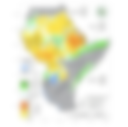Featured Publications

IGAD Regional Focus of the 2025 Global Report on Food Crises
- In five countries with comparable data since 2016 (Kenya, Somalia, South Sudan, the Sudan and Ugand…

Stakeholder Consultations: Impact Based Forecast Development
The importance of an inclusive, gender-transformative approach to implementing IBF emerged as a key…

Summary for Decision Makers, October to December 2025 Season
Download our Summary for Decision Makers with impacts and advisories for the October-December 2025 …

GHACOF 70 report
The 70th Greater Horn of Africa Climate Outlook Forum (GHACOF70) was held from 19th to 20th May 202…
All Publications
Filter by Publication Type
Filter by Service
Filter by Project
Filter by Year
Showing 187 results

Regional water cycle sensitivity to afforestation: synthetic numerical experiments for tropical Africa
Afforestation as a climate change mitigation option has been the subject of intense debate and study over the last few decades, particularly in the tropics, where agricultural activity is expanding.
However, the impact of such …

Evaluation of CMIP6 historical simulations over IGAD region of Eastern Africa
The Accuracy of model simulations is critical for climate change and its socio-economic impact. This study evaluated23 Global climate models participating in the Coupled Model Intercomparison Project phase 6 (CMIP6). The main objective was to …

Summary for Decision Makers, October to December 2023 Season
Download our latest Summary for Decision Makers with impacts and advisories for the following sectors:
- Disaster Risk Management
- Agriculture and Food Security
- Water and Energy
- Health and nutrition
- Livestock
How should I use seasonal forecasts? …

New Functionalities and Regional/National Use Cases of the Anomaly Hotspots of Agricultural Production (ASAP) Platform
The Anomaly Hotspots of Agricultural Production (ASAP) Decision Support System was launched operationally in 2017 to provide timely early warning information on agricultural production based on Earth observation and agro-climatic data in an open and …

Technical statement from the 65th Greater Horn of Africa Climate Outlook Forum (GHACOF65) 22 August 2023; Nairobi, Kenya
October to December (OND) constitutes an important rainfall season, particularly in the equatorial parts of the Greater Horn of Africa (GHA), where OND contributes 20-70% of the annual total rainfall. Analysis of global climate model …

Extreme climatic events to intensify over the Lake Victoria Basin under global warming
This paper presents an analysis of future precipitation patterns over the Lake Victoria Basin, East Africa, using bias-corrected CMIP6 model projections.
A mean increase of about 5% in mean annual (ANN) and seasonal [March–May (MAM), …

A Lagrangian Analysis of the Sources of Rainfall Over the Horn of Africa Drylands
The Horn of Africa drylands (HAD) are among the most vulnerable regions to hydroclimatic extremes.
The two rainfall seasons—long and short rains—exhibit high intraseasonal and interannual variability. Accurately simulating the long and short rains has …

Summary for Decision Makers, June to September 2023 Season
Download our latest Summary for Decision Makers with impacts and advisories for the following sectors:
- Disaster Risk Management
- Agriculture and Food Security
- Water and Energy
How should I use seasonal forecasts? Seasonal forecasts are tailored …

Statement from the 64th Greater Horn of Africa Climate Outlook Forum (GHACOF64)
June to September (JJAS) is an important rainy season, especially in the northern regions of the Greater Horn of Africa (GHA), where it contributes to more than 50% of the annual rainfall. The forecast indicates …
